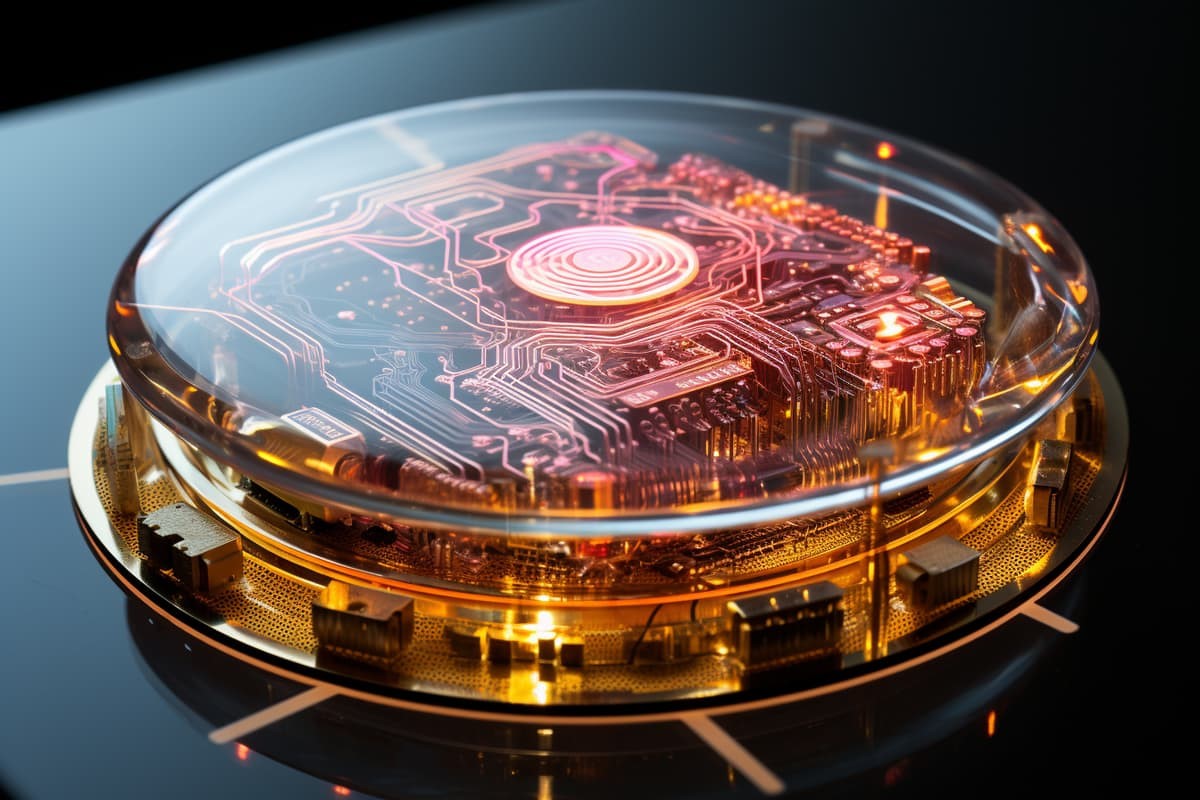Military financing for a computer chip with integrated human brain tissue
Last year, researchers at Monash University unveiled a remarkable creation known as the "Dish Brain," a semi-biological computer chip incorporating approximately 800,000 brain cells derived from humans and mice. These brain cells were cultivated onto the chip's electrodes. Impressively, the Dish Brain demonstrated a form of sentience by quickly learning to play the game Pong within just five minutes.

Figure 1. Military financing for a computer chip with integrated human brain tissue
Figure 1 shows at the core of the Dish Brain was a micro-electrode array with the ability to both read the activity of brain cells and stimulate them using electrical signals. The research team devised an experimental setup in which the brain cells were exposed to a moving electrical stimulus, simulating the movement of a ball in a Pong-like game. [1] The cells were allowed to influence the movement of the game's paddle by responding to this stimulus. The researchers established a basic reward system that leveraged the brain cells' tendency to minimize unpredictability. When the paddle successfully hit the ball, the cells received a predictable stimulus. However, if the paddle missed, the cells experienced four seconds of unpredictable stimulation.
This innovative approach marked the first instance in which lab-grown brain cells were not only given the ability to sense their environment but also to take actions based on it. The results were so compelling that the project, conducted in collaboration with Melbourne startup Cortical Labs, secured a significant grant of $407,000 from Australia's National Intelligence and Security Discovery Research Grants program.
These "Dish Brain" chips, which merge biological computing with artificial intelligence, have the potential to outperform existing purely silicon-based hardware in the future. According to Associate Professor Adeel Razi, the project's lead, this research could have far-reaching implications in various fields such as robotics, advanced automation, brain-machine interfaces, and drug discovery. The advanced learning capabilities of Dish Brain could become the foundation for a new era of machine learning, particularly benefiting autonomous vehicles, drones, and robots. This technology could offer a unique form of machine intelligence capable of continuous learning throughout its operational life.
The technology holds the promise of machines that can learn new skills without forgetting old ones, adapt effectively to changes, and apply previous knowledge to new situations. These machines would continually optimize their use of computing power, memory, and energy. The research team intends to utilize the grant to further develop AI systems that replicate the learning capacity of these biological neural networks. The ultimate goal is to scale up the hardware and methods to a point where they become a feasible replacement for traditional silicon-based computing.
References:
- https://newatlas.com/computers/human-brain-chip-ai/
Cite this article:
Janani R (2023), Military financing for a computer chip with integrated human brain tissue,Anatechmaz, pp.483

